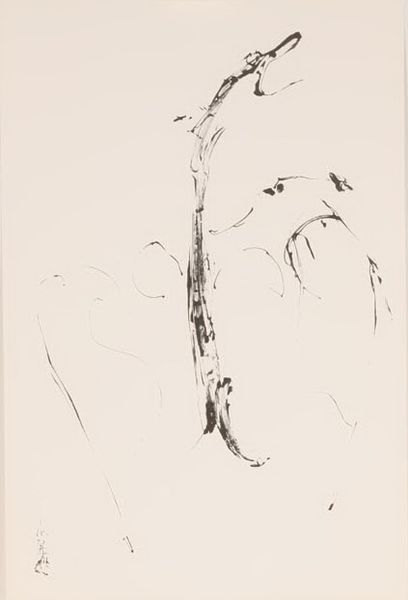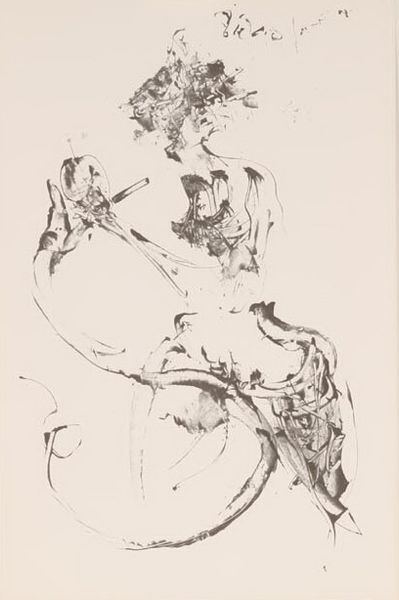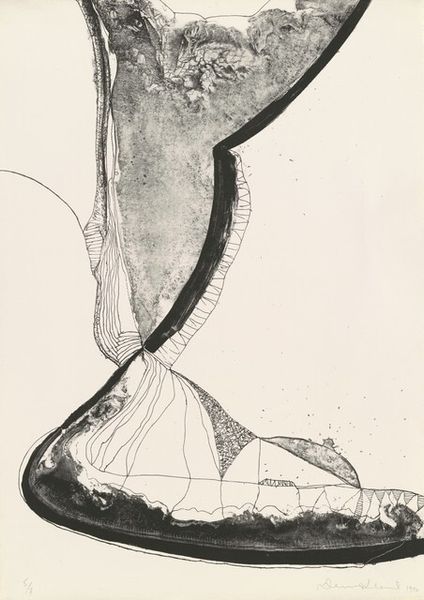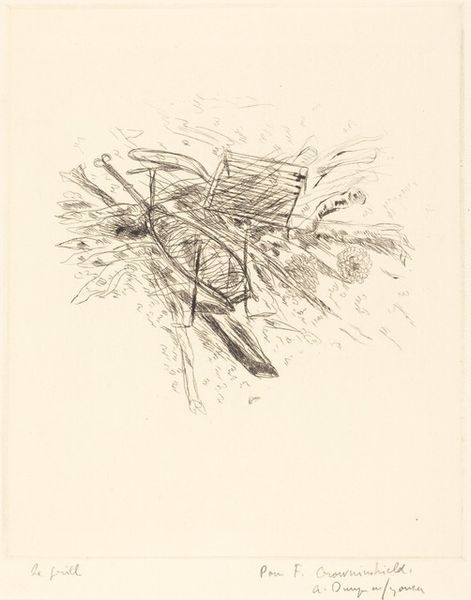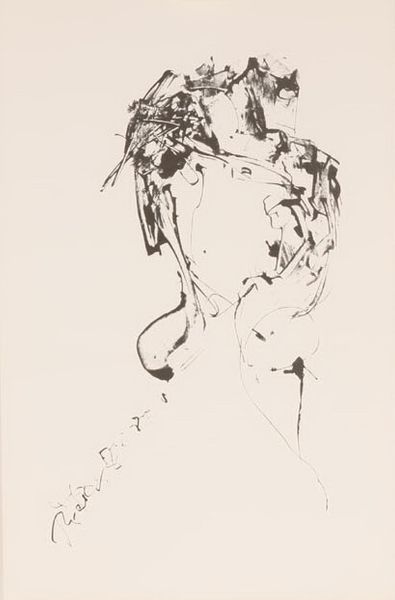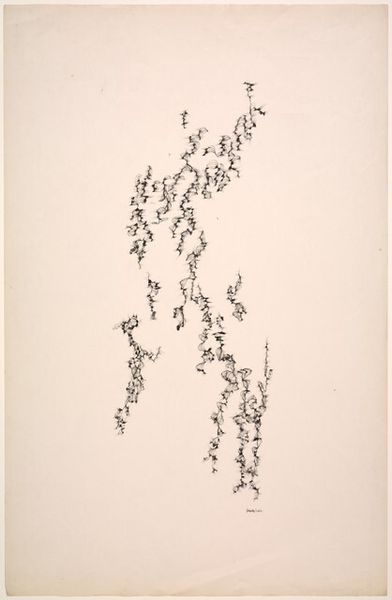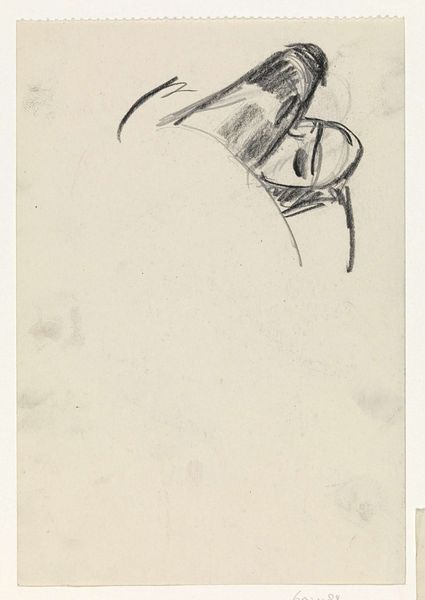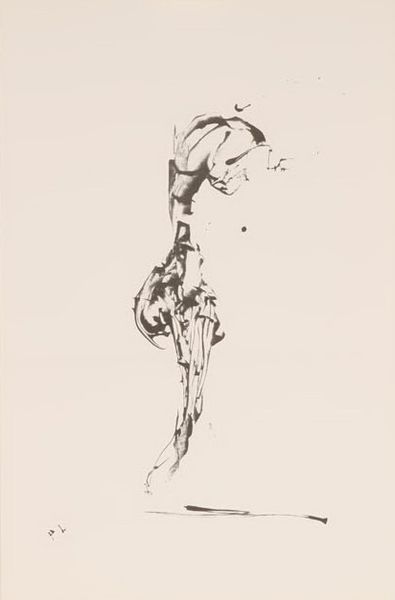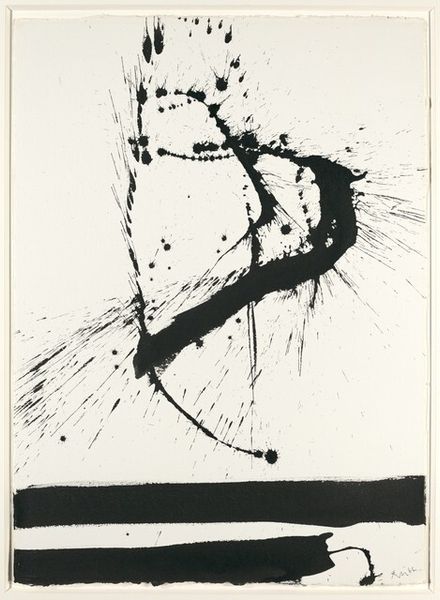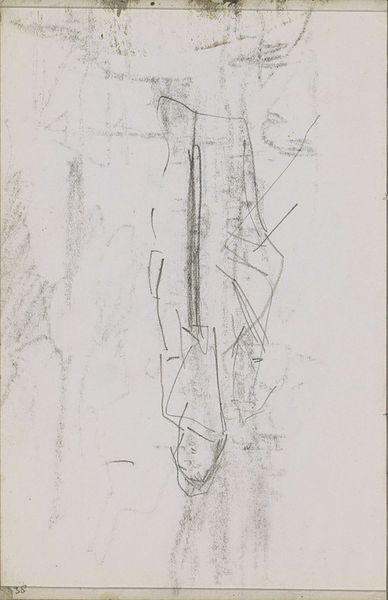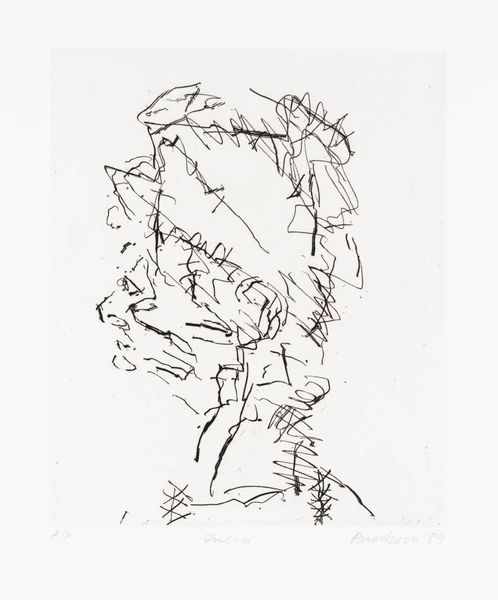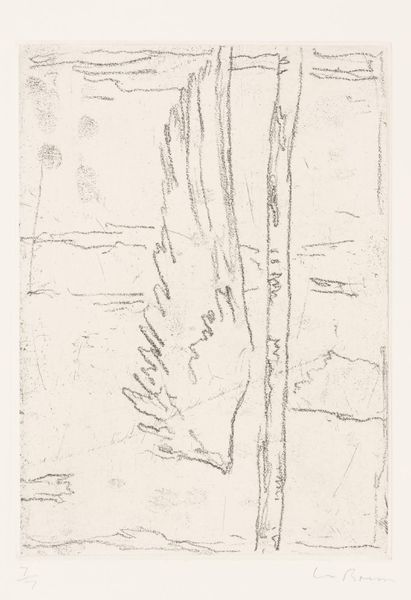
drawing, ink
#
drawing
#
ink drawing
#
ink
#
abstraction
#
line
Copyright: Pietro Lazzari,Fair Use
Curator: Standing before us is Pietro Lazzari's "Adam and Eve (2)," created in 1970. It’s an ink drawing, seemingly simple but dense with implied meaning. Editor: My initial reaction is unease. There’s something skeletal and spartan about it. A sinuous branch struggling, maybe reaching. Not exactly the Garden of Eden I had in mind. Curator: It’s precisely that tension that draws me in. Lazzari presents this foundational biblical narrative through abstraction. How does it challenge the viewer’s understanding of this well-known myth and its historical representation within Western art? Editor: The starkness, rendered in ink, really disrupts that comfortable, often hyper-sexualized depiction of Adam and Eve. The single apple looks…rotten, almost. It reads as a commentary on the inherent corruption embedded within the story of origin. It makes me think about the institutional frameworks that underpin art and even how we approach thinking about this moment. Curator: Absolutely. The date is crucial too, 1970. We see a rise in challenging religious narratives. Was Lazzari exploring the cracks in the traditional power structures through his work? This date situates the drawing amid significant social upheaval. Editor: I also see a deliberate fragility. The thin lines, the spare composition—they emphasize vulnerability. It’s not about strong, idealised bodies tempting fate; it’s about a precariousness inherent in being human. I notice the stark black lines create sharp, unnatural juxtapositions—it gives a haunting feeling. It brings questions to the foreground that concern not only religious but also societal themes. Curator: The technique, the deliberate linearity, focuses the viewer on the artist's line itself and directs the emotional charge of the piece. Consider the weight of history Lazzari engages. I also want to notice Lazzari was an Italian artist; thus, he stands directly in a continuous cultural, aesthetic, and political lineage. Editor: Yes, and Lazzari is positioning us to reflect on that tradition and to consider a more profound relationship with the politics of symbolism that have historically excluded individuals, in their artistic approaches or interpretations. Lazzari questions established concepts around identity through these artistic approaches. Curator: What I appreciate most is that the artwork makes me examine not only its intrinsic aesthetics but the culture of art and religion at that period of its conception and how this piece relates. Editor: It reminds us that these stories and narratives have an active and continuously evolving place within art, social studies, and more broadly speaking—society.
Comments
No comments
Be the first to comment and join the conversation on the ultimate creative platform.

